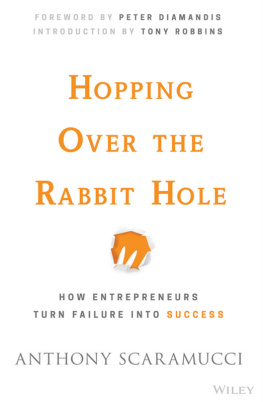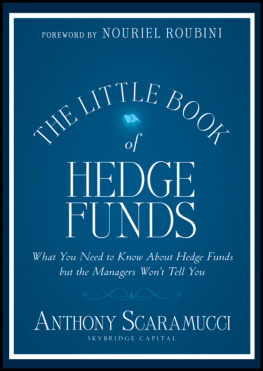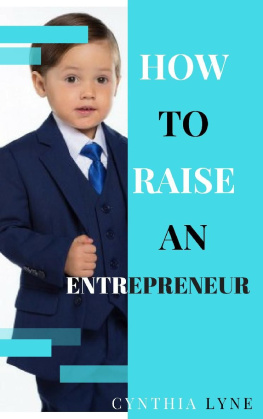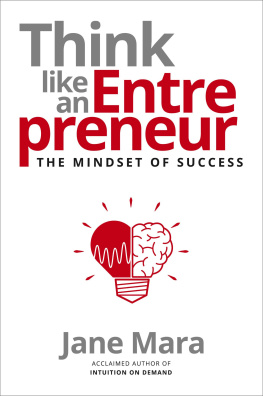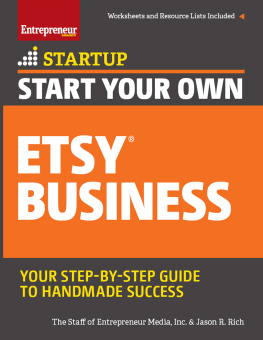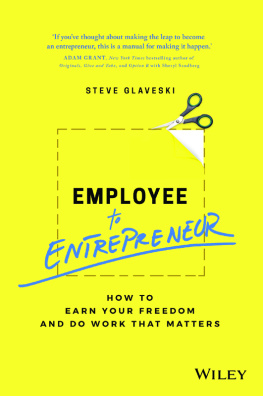
Cover image: Alvaro Arroyo/Getty Images, Inc.
Cover design: Wiley
Copyright 2016 by Anthony Scaramucci. All rights reserved.
Published by John Wiley & Sons, Inc., Hoboken, New Jersey.
Published simultaneously in Canada.
No part of this publication may be reproduced, stored in a retrieval system, or transmitted in any form or by any means, electronic, mechanical, photocopying, recording, scanning, or otherwise, except as permitted under Section 107 or 108 of the 1976 United States Copyright Act, without either the prior written permission of the Publisher, or authorization through payment of the appropriate per-copy fee to the Copyright Clearance Center, Inc., 222 Rosewood Drive, Danvers, MA 01923, (978) 7508400, fax (978) 6468600, or on the Web at www.copyright.com. Requests to the Publisher for permission should be addressed to the Permissions Department, John Wiley & Sons, Inc., 111 River Street, Hoboken, NJ 07030, (201) 7486011, fax (201) 7486008, or online at www.wiley.com/go/permissions.
Limit of Liability/Disclaimer of Warranty: While the publisher and author have used their best efforts in preparing this book, they make no representations or warranties with respect to the accuracy or completeness of the contents of this book and specifically disclaim any implied warranties of merchantability or fitness for a particular purpose. No warranty may be created or extended by sales representatives or written sales materials. The advice and strategies contained herein may not be suitable for your situation. You should consult with a professional where appropriate. Neither the publisher nor author shall be liable for any loss of profit or any other commercial damages, including but not limited to special, incidental, consequential, or other damages.
For general information on our other products and services or for technical support, please contact our Customer Care Department within the United States at (800) 7622974, outside the United States at (317) 5723993, or fax (317) 5724002.
Wiley publishes in a variety of print and electronic formats and by print-on-demand. Some material included with standard print versions of this book may not be included in e-books or in print-on-demand. If this book refers to media such as a CD or DVD that is not included in the version you purchased, you may download this material at http://booksupport.wiley.com. For more information about Wiley products, visit www.wiley.com.
ISBN 9781119116332 (Hardcover)
ISBN 9781119153672 (ePDF)
ISBN 9781119153665 (ePub)
For Deidre,
AJ, Amelia,
Anthony, and Nicholas
Foreword
There was widespread panic in fall 2008 with the collapse of Lehman Brothersthe largest bankruptcy in historybut by late-winter/early-spring 2009, the bottom really fell out and there was widespread pessimism and gloom. By March 2009 the stock market was screeching to a 13-year bottom. The Federal Reserve was about to unleash record liquidity, but before that happened, many hedge funds went out of business and there was massive consolidation in the commercial and investment banking sectors. It felt like a precursor to the next great global recession.
There was a small firm named SkyBridge run by a guy that I had never met. His name was Anthony Scaramucci and from what I could tell, they had a small fund that was hobbled by the global financial crisis but they were trying to pretend that they were going to be okay. A partner there named Victor Oviedo reached out to me to see if I wanted to speak at their hedge fund conference, which they were calling the SALT (which stood for SkyBridge Alternatives) Conference. They wanted me on a panel to discuss the future.
Why me? I asked.
Our industry is facing unprecedented turbulence and downturns, highlighted by dire forecasts and unnerving negativity. You, however, are an extreme optimist and we need a boost of positivity. Victor explained. It would be another three years before I co-authored Abundance: The Future is Better Than You Think, but I was prepared to talk about a future where technological innovation would make it possible to provide health and wealth for everyone on the planet. With that premise in mind, I made the case about the abundant future to a dour group of delegates who were uncertain about the economy and its impact on their businesses. Yet, what none of us knew then was that we were at the beginning of an entrepreneurial adventure for SkyBridge and its founder Anthony Scaramucci.
I first met Anthony at that 2009 event and from the looks of him you wouldnt have known that heand his businesswere hurting. He had confidence and charisma, was a great public speaker, and the consummate salesman. But more importantly, he had a level of persistence and passion I rarely see.
What you will learn from Hopping Over the Rabbit Hole is that SkyBridge was teetering and was close to failing. Anthony kept a brave front and pushed on, and the insights he learned are told in the following pages in all their glory, in the most refreshingly honest and thoughtful fashion. I often fear reading autobiographical books about entrepreneurs since most sanitize the facts and forget their failures. Rich and successful people have a tendency to do that. The glory that they have found starts to distort their past in an effort to make their journey look effortless. You wont find any of that here. While the story hits rock bottom on a number of occasions, both the company and the culture never break, they bounce.
Anthony has written an honest appraisal of his firm and his own skills as an entrepreneur replete with personal anecdotes about human weakness and folly. He also loaded this book with advice. If you are starting a business and are buying this book as a roadmap or an inspirational tool, I would suggest that you read it with a highlighter except that youd probably mark up every page. The material is that goodprimarily because it is so honest and raw. You can feel the anxiety and fear of failure mixed in with the overconfidence and unbridled enthusiasm. Anthony grew up in a middle-class family, so while he had a decent upbringing and lifestyle, there was no safety net to fall onto if things went south. He tells his stories with a level of honesty and graciousness. You can feel his excitement but also his frailty and fear.
In September 2014, Anthony attended the Executive Program of Singularity University (SU), the Silicon Valley-based institution focused on exponential technologies that I co-founded with artificial intelligence legend (and Googles Chief Innovation Officer), Ray Kurzweil. His son AJ had previously attended SUs full 10-week Global Solutions Program (GSP) and he coaxed his dad to come out for the one-week intensive executive version. AJ would eventually go on to become a member of my Strike Force (an apprentice), but back then he was trying to open his fathers eyes to the world of disruptive exponential technologies such as nanotechnology, virtual reality, and artificial intelligence. When I had the chance to connect with Anthony at SU and ask him the question I often chide New York financial types with, Are you changing the world? he responded quickly by saying, No, not in the way you guys are. There was no false modesty in that statement, but he missed something big.
Truth be told, Anthony and SkyBridge were in fact transforming their industry. Hedge funds were primarily for the very wealthy or for the sophisticated institution. SkyBridge came along with a product that was able to bring the world of hedge fund investing to the mass affluent. Years ago, hedge fund managers were only taking large minimum investment checks. In some cases, the very best managers had a $10 or $15 million minimum investment. SkyBridge created a vehicle where investors only need to put up $25,000. This changed the landscape for the hedge fund community and he and his firm increased the number of people that could invest in these sorts of alternative investments. It also fits into the themes that I often write and speak about: the democratization of products and services that used to be reserved for the ultra-wealthy and are now being made available to the masses.
Next page
